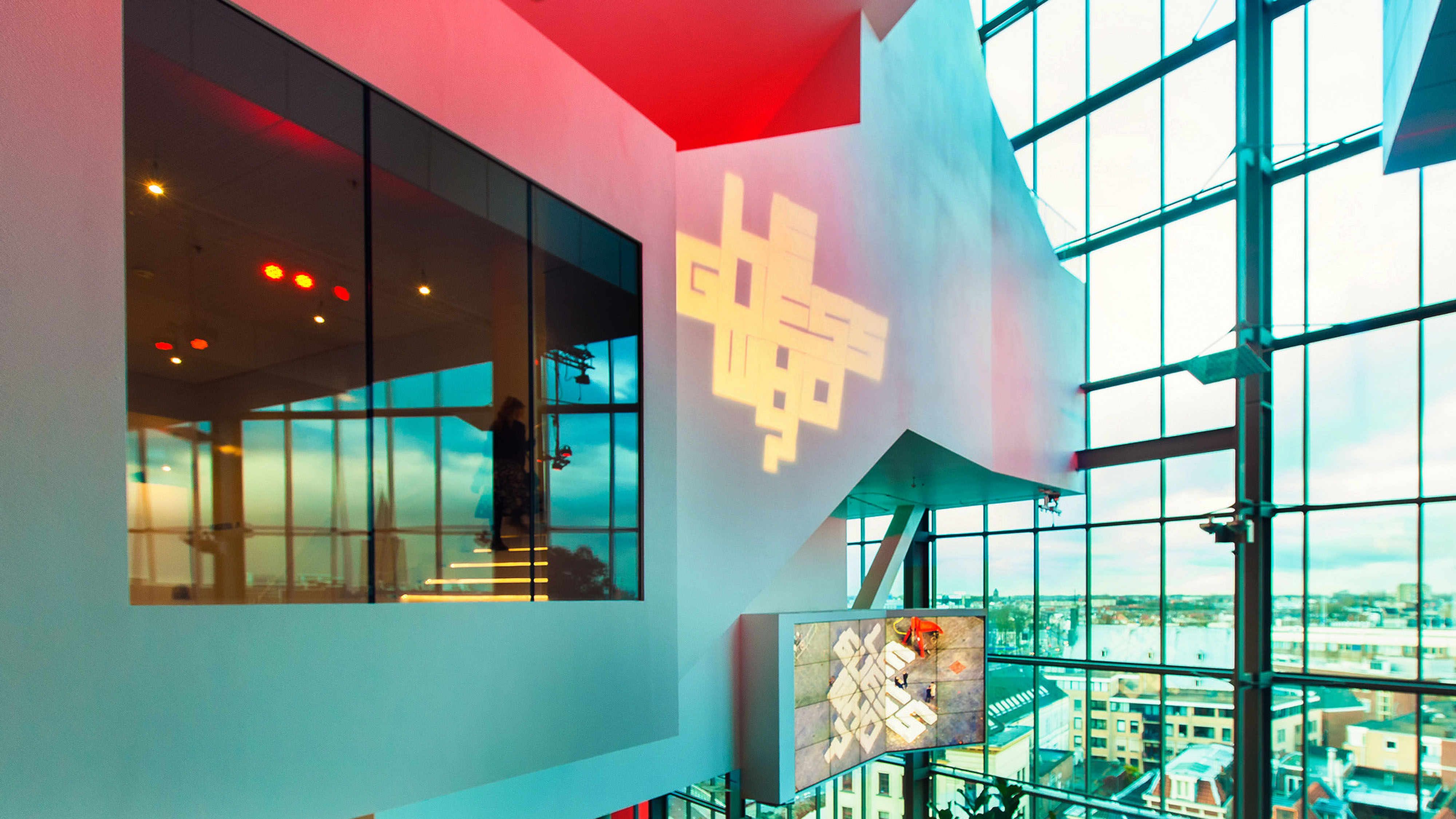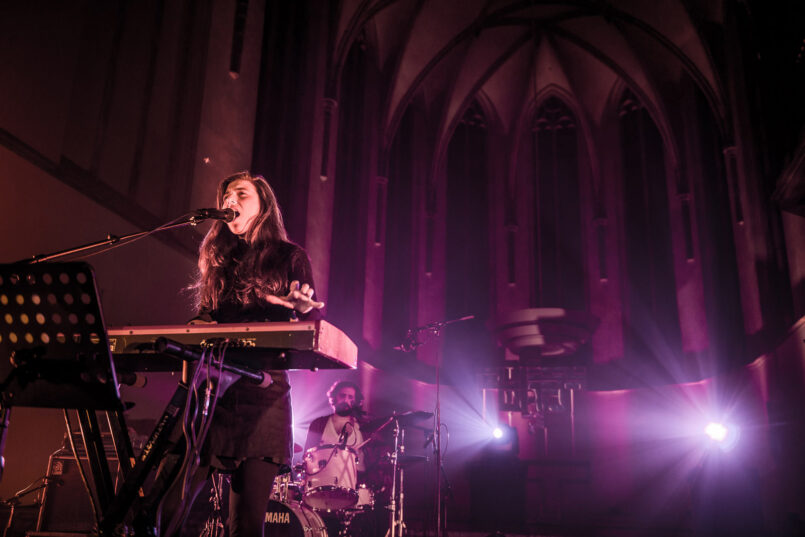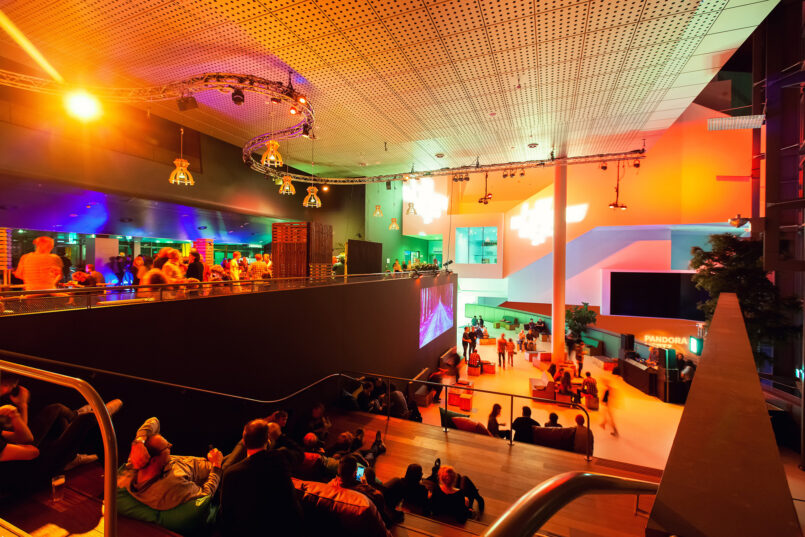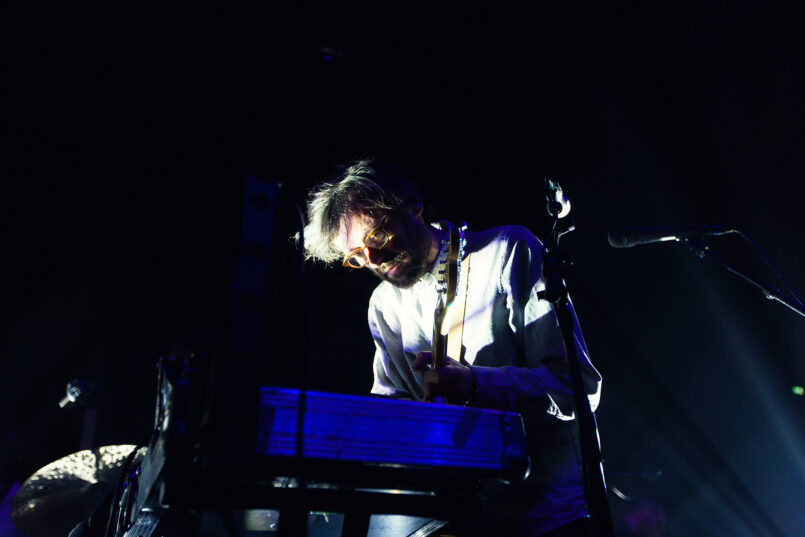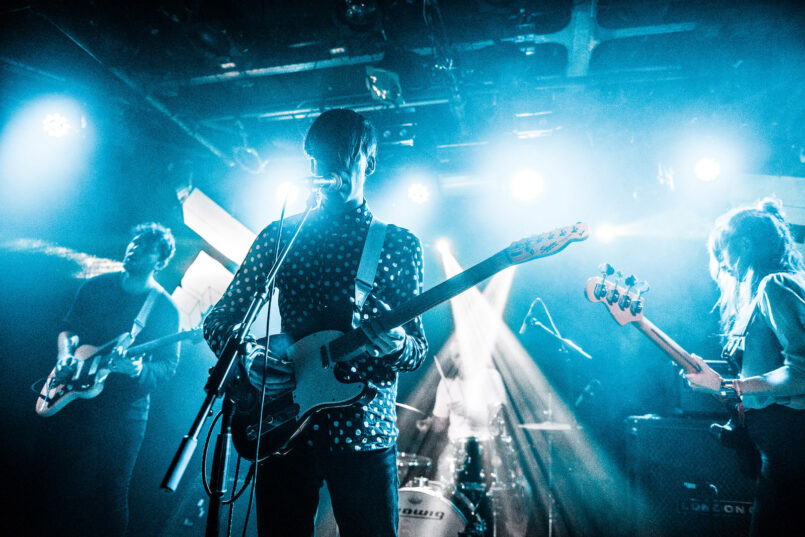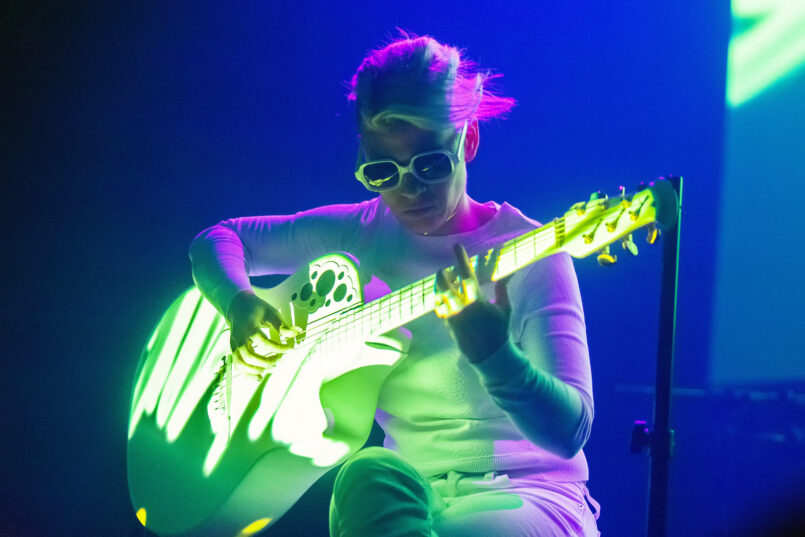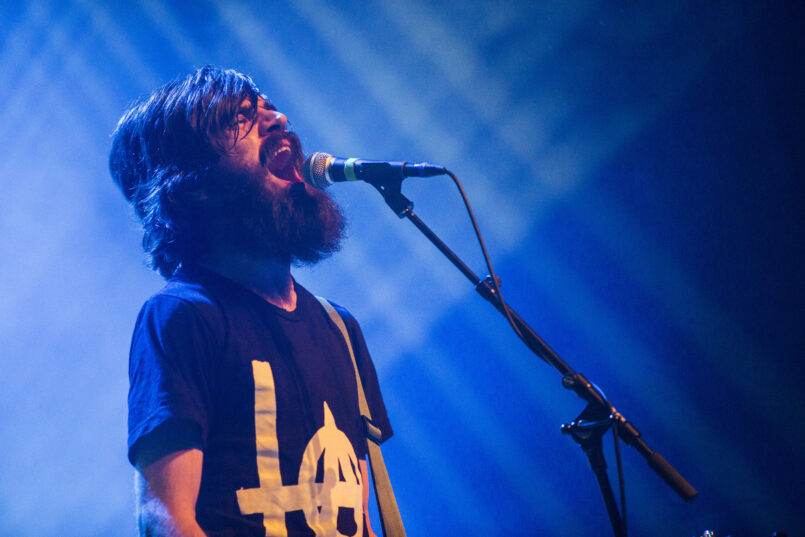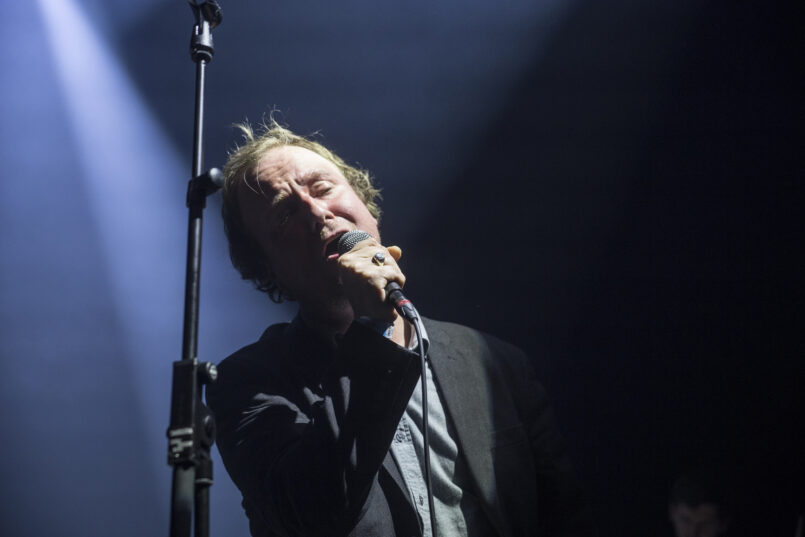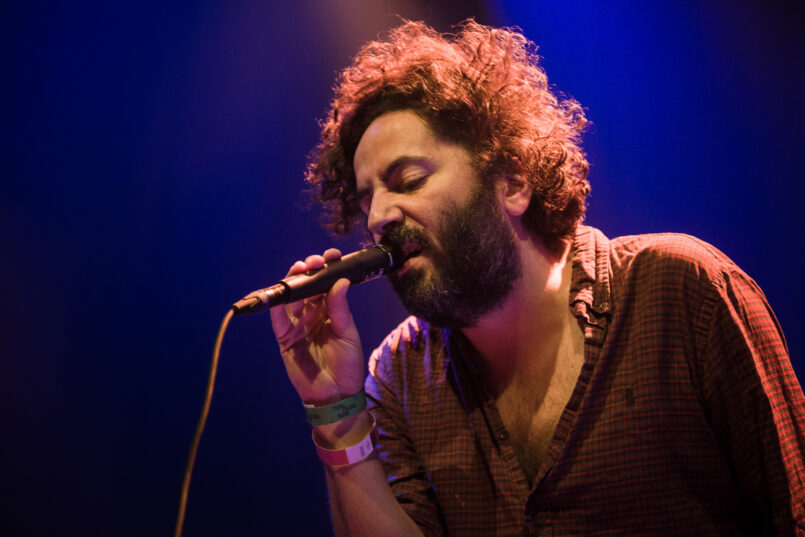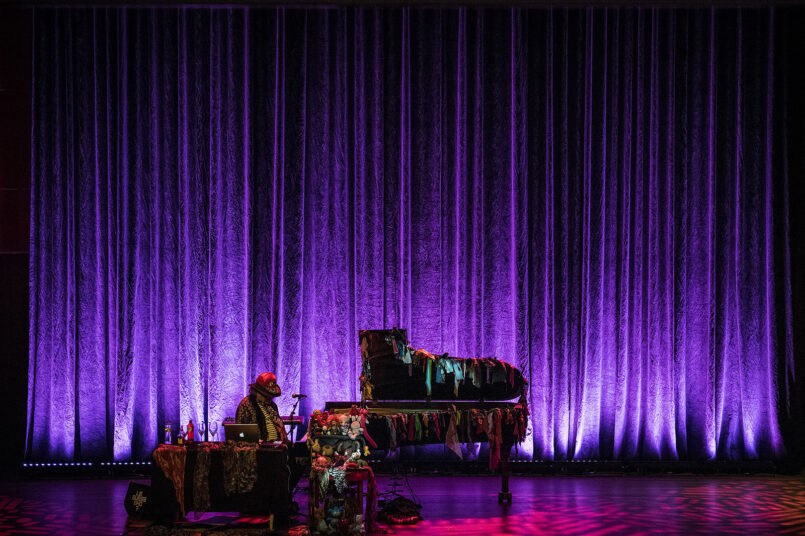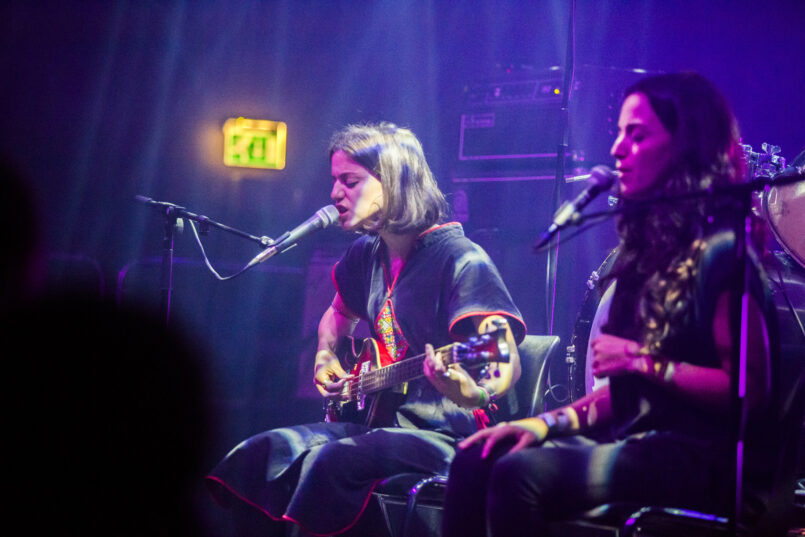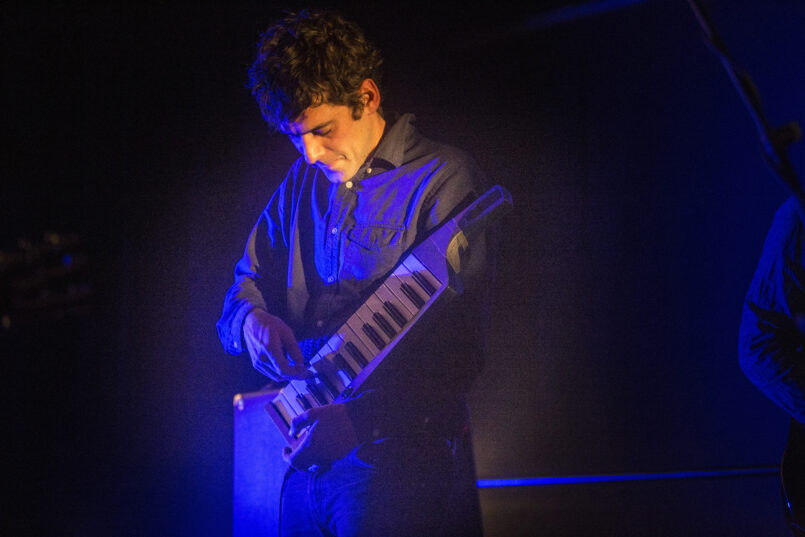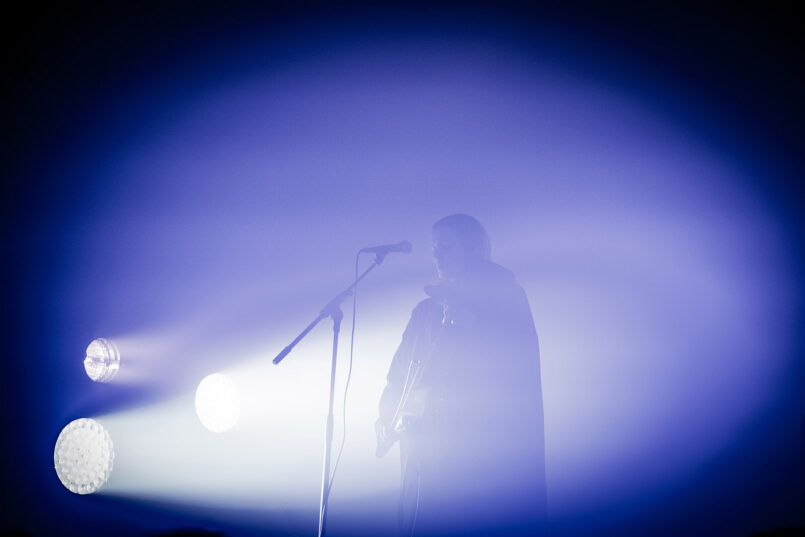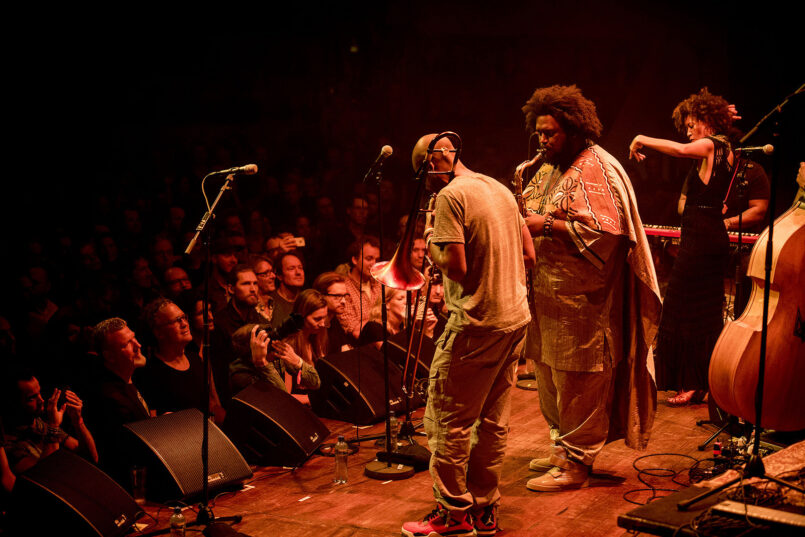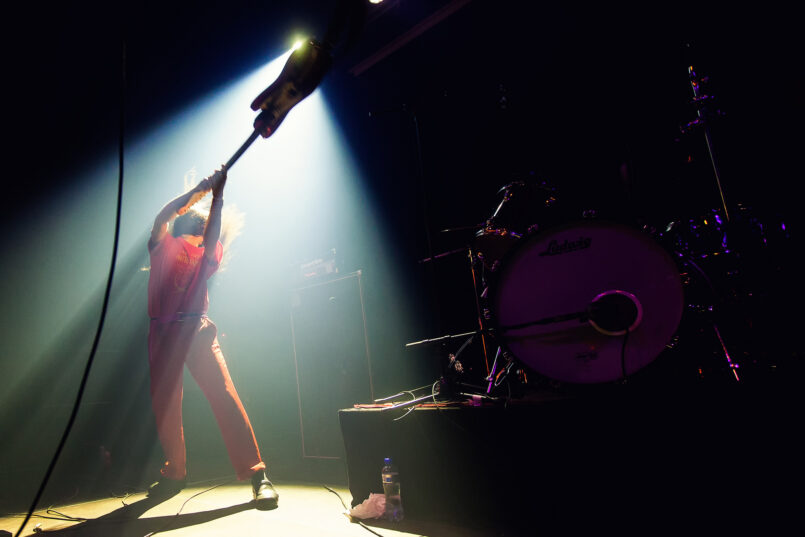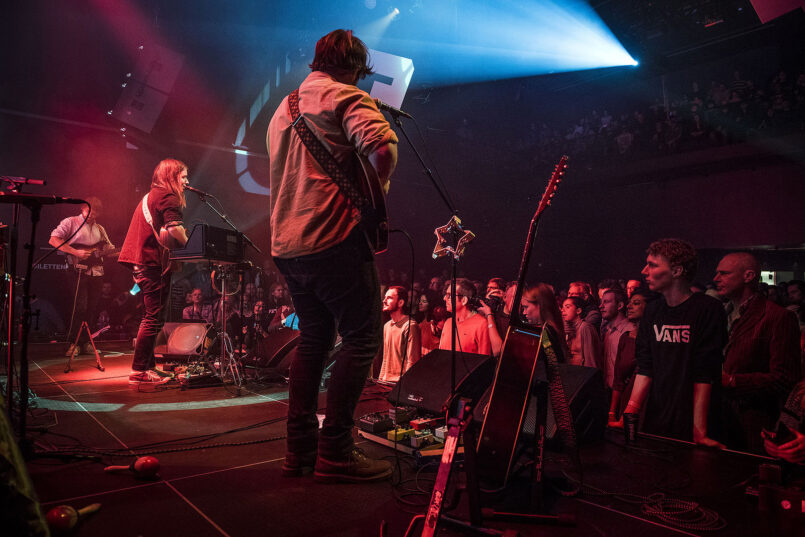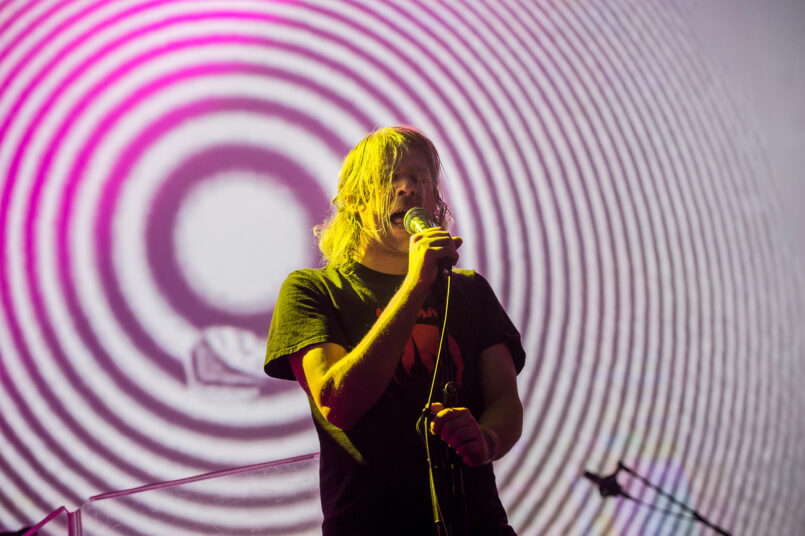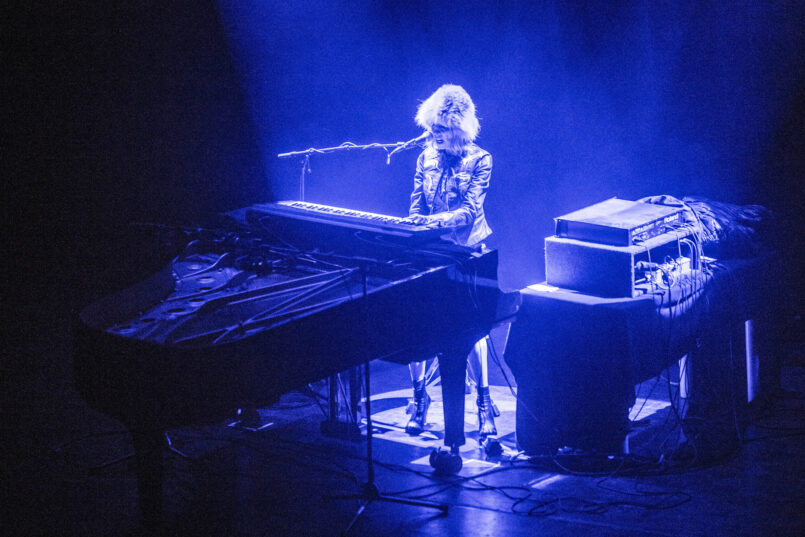Just twenty minutes by train from Amsterdam, Utrecht has long been overlooked by tourists, who are content to elbow their way through Amsterdam’s crowded streets. All the better for Utrecht, a smaller college town that’s been mastering the art of civilization since its founding around 50 B.C. The annual Le Guess Who? music festival is helping to change that by sending ardent music fans running through the city’s streets on a treasure hunt to unearth musical gems tucked away across the tiny town.
The line-up is filled with music for fans of the dark, avant and under-the-radar, plus Dutch bands of every make and model given their own showcases in venues across the city. There were so many incredible acts to see it was hard to know where to begin, so it made sense to follow in the footsteps of Utrecht’s founders and head straight to church.
If you ever have the chance to see Julia Holter perform in a church, take the opportunity. Built in the 11th century (i.e. 500 years before the United States was even a twinkle in Thomas Jefferson’s eye), Janskerk is an ode to Romanesque architecture, with semi-circular arches outlining the main nave and 100-foot ceilings soaring overhead. They also serve beer. Underneath the glory of it all, Julia Holter, whispering, and then singing, delivered a powerful ode to Paris in the wake of the attacks there. Her words, buttressed by the bass, drums, violin, and keyboard, twisted up to the rafters powerful and delicate, and the audience sat rapt, jaws dropped, beers held in hands and frozen in wonder.
After the show, the streets of Utrecht were slick with rain, which didn’t stop any of the city’s ardent cyclists (or even convince them to slow down). The road to the TivoliVredenburg was packed with music fans heading to Utrecht’s still-new music center. Presumably designed by M.C. Escher, the sleek building houses five separate venues accessed via twisting staircases, a maze of escalators, and hidden corridors that lead to back entrances that in turn open into gorgeous spaces.
The Notwist played in the Grote Zaal (Big Hall), a hexagonal room with stadium seats surrounding an open area—perfect for dancing. The band’s complex, emotional songs sent waves over the crowd, who were mesmerized by the incredible light show and the sight of man playing a marimba with bows. The Notwist is one of those bands that makes you feel like you’ve taken drugs even when the strongest thing you’re on is jet lag. Their songs are so beautiful they almost make you want to run away from them.
Then it was back through the rainy streets and back to the church, where Majical Cloudz was delivering a stripped down and raw set. Devon Welsh stood onstage singing his laconic love songs, his voice and Matthew Otto’s synthesizers rising like a river to flood the space. It sounded like a hymn, punctuated only by Welsh’s strange deadpan humor.
It was necessary to pull up Google Maps to find the tiny club Ekko, which is tucked away on the wrong side of a canal. The map said to follow a brick-lined road lit only by the lights shining out of two-hundred-year old homes across said canal. Getting to the club required crossing a dam on a bridge just wide enough for one. Charming, but once you get through the door of the club, you realize there’s a bar like this in every town. Drinks up front, bands playing in a black hole in the back. Rats on Rafts served up a fiery set of garage rock with just enough rockabilly-on-speed twang to keep things interesting. The set ended when the band got in a fight with an audience member, the lights came on, and everyone left. In the States there would have been a brawl, but here in the polite Netherlands, the drunk student was simply escorted from the premises and sent out into the night. It was a perfectly abrupt ending to the evening, made more surreal by jet lag, and presented a good opportunity to hop on a bike and head back to the hotel, excited, sated, and definitely exhausted.
Utrecht is making a name for itself as a city of music filled with music collectives, recording studios, synthesizer enthusiasts, and underground clubs. It’s possible to see them all when fueled by a steady stream of the city’s finest coffee and a doughnut known as an Oliebollen or the more well-known waffle cookie, stroopwafels. Once properly balanced on sugar and caffeine, it was back to Tivoli, where Kaki King played in a venue called Pandora. She sat on stage with no vocal mic, as she prefers to let her guitar do the talking—literally. Her simple—yet evocative—stage show would be familiar to anyone who saw her “Surface Changes” video, but it’s even more vivid and exquisite live. She sits on a dark stage as images of trees or scenes from Tron are projected onto her guitar. There’s something of a senior art thesis project about it, but it’s saved when paired with King’s music. Before the show slipped over a cliff of somber sincerity, she played the silly “Roaming Guitar,” a stop-motion scrapbook of her guitar’s journey, which provided some much needed levity. Too much high art makes you forget music is supposed to be fun.
For a jarring experience, head from the quiet beauty of Kaki King to the blistering energy of full throttle Titus Andronicus. There’s nothing quite like watching Patrick Stickles sweat through his t-shirt to help shake off any jet-lagged exhaustion. The frenzied energy they throw into their shows is enough to wake up even the most deliriously tired traveler.
To complete the effect, simply head up the many criss-crossing stairs of the Tivoli center to see Protomartyr. The lead singer, Joe Casey, is incongruous on stage in his khakis, blazer, and polo shirt, looking a bit like the guy who’s always hanging out in any office building’s copy room. But when he’s on stage, he and his band of Detroit post-punkers dominate the room, and the audience can’t help but fall under the spell of the collapse and decay of their propulsive and peculiar songs.
After grabbing a coffee at one of Utrecht’s many coffee shops (it is a college town, after all) it was back to the church. Josh T. Pearson delivered a devastating performance at the Janskerk venue. Decked out in a Stetson and white jeans, he looked like a cowboy in Sunday school, albeit one playing in a Dutch church and possibly singing about blow jobs. He was joined on stage only by his guitar case, which was propped open with a cardboard sign that read “Love Thy God!” like he was a busker hoping to appeal to your Christian charity. His lonesome voice filled the space, dryly explaining that he hadn’t played these heartbreak songs in two and a half years and that returning to them was “just like cutting your fucking arm off.” He grimly launched back into the performance with an undercurrent of resignation that made it all sound too true. The performance was shattering, but it was impossible to look away.
According to the locals, everything in Utrecht is a ten-minute bike ride away. Everything, that is, but De Helling, the tiny, dingy, beer-glass-strewn club where Chelsea Wolfe played. To get there required a bus ride to an empty industrial zone with only a dimly lit question mark—the telltale sign of Le Guess Who? Festival—marking the door. Despite the distance and the dismally cold and rainy weather, the club was packed for Wolfe’s performance as she unleashed her asphalt waves over the crowd. Her sludgy sound is an acquired taste, but one that’s worth the effort to learn to appreciate, as she does it better than anyone else.
Le Guess Who? Festival’s headliners may rule the night, but the days belong to the local, lesser-known acts. One of the festivals greatest charms is the so-called Le Mini Who, which transforms Utrecht’s shops and restaurants into venues for local bands to play. Pick up a coffee at The Village and find Howart, a dreamy, experimental pop band, filling the space. Stop by Revenge to window shop and one-woman-one-keyboard band Fetter is playing a set. Concept store Hutspot featured a band doing an impressive Stone Roses cover. Le Mini Who makes exploring the city feel like a treasure hunt for the next great band, who could be next year’s headliner.
After two nights biking, walking, and bussing through the streets of Utrecht, by the time Saturday rolled around it was nice to have most of the bands playing in one location. That said, the Tivoli center has more staircases than you would believe possible, and running up and down them between acts requires stamina, coffee, and the Rocky theme song.
Up first was Destroyer. Dan Bejar brought a full band for his set, including horns, synths, and multiple guitars giving his songs a pleasant fullness (like they had been eating the local stroopwafels, too). There’s no such thing as a bad Destroyer show, as Bejar and his crew always manage to make a little magic on stage, and this performance was no different. While Destroyer is not exactly the type of music to whip the crowd into a frenzy, there were heads bobbing and tentative hipster dancing (which is, in fact, universal) across the crowded space.
Sunn O))) curated a portion of the festival and one of their choices was Charlemagne Palestine, born Chaim Moshe Tzadik Palestine, a pianist who looks like his set inspiration was Detroit’s Heidelberg Project. Sitting at a grand piano covered in scarves and stuffed animals with an iBook and several empty wine glasses, the 70-year old Mr. Palestine wore at least two hats and a leopard print coat for his set. In New York City, free pianos dot the streets, and occasionally a homeless virtuoso will sit down and play something mindblowing and a crowd will form to gawk. Charlemagne Palestine is like if that person appeared on stage in a concert hall in Utrecht, and the audience stared, rapt and bewildered at the wonder of it all.
Then it was up the stairs to see Deradoorian. While Angel Deradoorian has worked as a solo artist since leaving Dirty Projectors, she appeared on stage with another woman. They sat in chairs on the stage like a two-woman performance of Waiting for Godot and were accompanied by a strange assortment of instruments and gadgets—a bass guitar, a shaker, pedals, a flute, and unerring sense of rhythm and melody. Contrary to their stripped down stage show, their music was complex and layered, hypnotic and challenging. It would have been nice to see them play in the festival’s church venue, because they made a dank club feel like a sacred space.
Head down two flights of stairs for a beer and then up three flights to see Ringo Deathstarr, a three-piece throwback rock band that sounds like they’ve been practicing in Kim Deal’s garage. They are messy and fun with melodies that emerge out of the grunge.
Magma was founded in France way back in 1969 and their sound is evocative of that era. Specifically, they sound like if the cast of Jesus Christ Superstar started making French art rock. Eight members fill the stage, with three vocalists each trying to tell their story competing with drums, guitar, a keyboard, and a marimba ruthlessly battered by mallets. It’s an oddly retro sound, and it’s easy to see why sound-art stars Sunn O))) chose them to appear at the festival.
Up two escalators, down a hall, up three flights of stairs and you finally arrive, hyperventilating, at the venue where Jerusalem in My Heart and Suuns are playing. Separately the bands are angular and exciting, but together they craft haunting and beautiful songs that sound like a call to prayer before transforming into something more urgent and demanding.
Outside of the venue where Sunn O))) was playing were signs warning attendees that the band was loud and that earplugs were going to be provided. It was a necessary precaution as the band’s music hits you like a frying pan to the face, sending vibrations down to your toes. Their t-shirt said it all: have you ever breathed a frequency? The band played shrouded in a purple fog that made it feel like a very angry cloud was out to get you. It’s fascinating and darkly compelling, but hard to withstand for an entire set.
It’s a special kind of festival where Kamasi Washington and Sunn 0))) will play simultaneously to packed rooms in the same venue. The avant jazz saxophonist had the crowd moving more than Titus Andronicus the night before. His freeform sax ramblings were backed by dueling drum kits, an upright bass, keyboards, a back-up singer, and a trombonist. His music is wild and free and led the audience into a frenzied dance, which makes you wonder if the Pied Piper actually played a saxophone.
The last stop of the night was Bo Ningen, playing at the top of the venue (of course), requiring a sprint on top of the already exhausting marathon. Luckily, Japan’s finest long-haired punks are like an audio version of an energy drink. It’s impossible to listen to their frenetic acid-drenched punk without feeling awake—or at least awake enough to make it down six flights of stairs and back to the hotel.
The final night of the festival opened with Mikal Cronin playing a set backed by horns and strings. On his album, MCIII, he incorporates both to great effect, but it’s only live that these additions really shine. They round out his sound, giving his music heft and maturity and lending songs like “The Weight” more weight and transforming “I’m Not Alone” into a meditative heartbreaker.
After Cronin’s set, it was up the stairs of Tivoli for a lovin’ spoonful of Dutch hippie savant Jacco Gardner. His dreamy, groovy sound is straight out of the 1970s with organs and bright guitars. Gardner has all the charisma of a cult leader, but luckily it’s a cult filled with sunshine and flowers that you want to join. The slightly somnambulant songs happily bob along, waiting for their chance to be featured on the inevitable remake of Midnight Cowboy.
Ariel Pink is an acquired taste, but he definitely has a solid fan base in the Netherlands. He played to a packed crowd of fans singing and dancing along to his performance. The stage show revolved around Pink singing and playing recorder in a plastic cage backed by a band that included a bikini-and-cowboy-hat-clad drummer while a screen displayed played a series of images that gave off the distinct impression that if you watched them too long, you would undoubtedly commit a murder. In short, it was a very Ariel Pink sort of show.
While Bradford Cox played played back-to-back sets with Atlas Sound and Deerhunter to close out the festival, the real star of the final evening was Annette Peacock, a David Lynchian fever dream of a performer who you should Google right now. The living legend hadn’t performed live in years and the crowd was enthralled from the moment she sat down at her piano, drenched in a blue velvet light. The wowed crowd stayed practically silent for the entire set, roaring applause between songs. Peacock had a synthesizer perched atop her grand piano and would drift back and forth between the two, doing a Lotte Lenya impersonation that would do both Kurt Vile and Kurt Weill proud. It was a highlight of a festival packed with must-see acts and once-in-a-lifetime performances.
Get your tickets early for next year, because Wilco is already slated to headline, which means that this under-the-radar festival may be poised to hit the big time. FL

